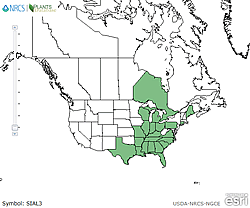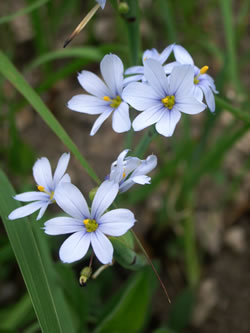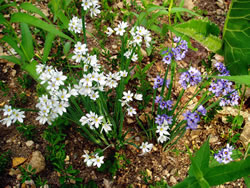Plant of the Week
 Sisyrinchium albidum range map. USDA PLANTS Database.
Sisyrinchium albidum range map. USDA PLANTS Database.
Blue-eyed Grass (Sisyrinchium albidum)
By Christopher David Benda
Blue-eyed grass is a slender-leaved perennial in the Iris family (Iridaceae). “Sisyrhinchium” comes from the Greek words “sys” and “rynchos,” which means “pig snout,” and it refers to the sweet tubers of this plant being dug up by foraging pigs. The species name “albidum” means “whitish” and refers to the flower petals of this species being occasionally white.
Although this perennial plant has grass-like leaves, it is actually more closely related to Iris. While grass flowers are typically inconspicuous and wind-pollinated, blue-eyed grass flowers are conspicuous and colorful because they must attract insect pollinators in order for fertilization to occur.
Individuals of this species are short and often have many stems and leaves. The leaves are basal and hairless, even sometimes glaucous. The flowers have six petal-like tepals that are white to pale blue, but the center of the flower is yellow. They occur singly or in small clusters at the tip of thin stalks, and arise from sessile, leaf-like bracts (called spathes).
This species is common in dry and sunny habitats like prairies, glades, and open woods. It occurs in the Midwest extending southeast to South Carolina and west to Texas.



